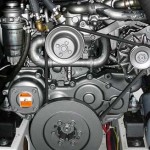Winterization Tips For Performance Boaters
In: Boating
1 Oct 2010 Sadly, it is the time of year for much of the country when performance boaters start the dreaded task of getting their boats ready for winter storage.
Sadly, it is the time of year for much of the country when performance boaters start the dreaded task of getting their boats ready for winter storage.
“Winterization not only protects a boat and engine from freeze damage, it also protects against long periods of sitting unused,” says Scott Shogren of Shogren Performance Marine, adding “It also makes for less prep time in the spring when you’re ready to get back on the water!”
Fuel Level :
Should be half to three-quarters full prior to winterization. This allows the correct amount of fuel stabilizer to be added and run through the entire fuel system as part of the process.
Fluids & Filters:
Both engine and drive gear oil and filters should be changed. Fresh fluids are always preferred for long-term storage. Water/ fuel separator filters should also be changed.
Flushing:
Engines should be flushed with a non-toxic antifreeze prior to winter storage to protect against any residual water that is left in the engine. The antifreeze has non-corrosive properties to help prevent against rust forming within the engine.
Batteries:
Fill the fluid levels in the batteries – if applicable – and have them fully charged with no draw before storage. Doing so allows batteries to remain in the boat all winter long and will be ready in the spring time with just a quick “top-off” charge.
ShrinkWrap:
Shrink Wrap is mandatory for outdoor storage to protect against the elements, but boats stored in unheated outbuildings should also be shrink wrapped to prevent rodents and other critters from making a warm winter’s nest.
“Don’t forget the freshwater system, head, air conditioner, hot water heater, shower sump and generator!” Shogren reminds owners, “They may have special winterization requirements to prevent damage” he adds.
Welcome to BeaverLakeBoaters!
This site is devoted to all things Beaver Lake Arkansas
Categories





Comments are closed.